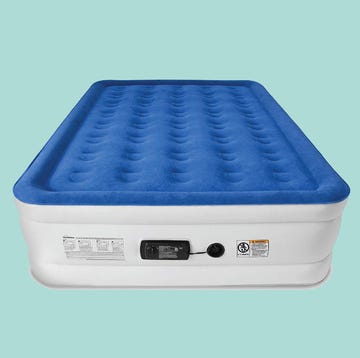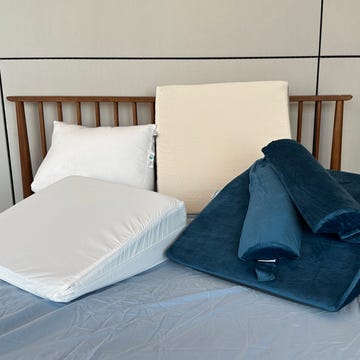I hate to admit it, but I can be pretty high-maintenance when it comes to sleeping on air mattresses, pull-out beds or even sofas. I always seem to wake up with an achy back, stiff neck or worse — a hole in the air mattress.
When I first heard about Japanese futons, I was immediately intrigued. A comfy, foldable mattress I can take in and out of the closet with ease? It seemed like the perfect solution for hosting guests in my small apartment. But before I could offer it up to friends staying the night, I had to try it for myself. Read on for more about my experience sleeping on a Japanese futon, and whether or not it's worth buying.
What is a Japanese futon?
In the U.S., the term "futon" typically refers to sofas that are specifically meant for sleeping. The mattress or padding usually sits on top of a wooden or metal frame. So when I learned that a Japanese futon is just the mattress or padding without the full-blown structure, I was surprised — but also excited. That meant I'd have the space for it in my apartment.
I decided to try out a popular $130 twin-sized Japanese futon from Amazon. Similar to the popular bed-in-a-box, my futon came compressed in an air-tight package. The brand recommends letting it expand for 48 hours before using it.
My experience sleeping on a Japanese futon
As someone who's a bit weary of sleeping anywhere besides my own bed, sprawling out across the floor was a new experience, to say the least. After letting the futon fully expand, I cozied it up with my favorite pillow and blanket. I slept on the futon three separate nights to get the full experience.
Once I got used to the fact that I was laying on my apartment floor, I actually started to feel comfortable. I slept through the night, and I surprisingly didn't wake up with any aches or pains. Plus, I wasn't dreading the clean-up process. I didn't have to deal with deflating an air mattress or struggling to fit it back in its bag. All I had to do was roll it up and throw it in the closet. Although I haven't had to deep clean the futon yet, the brand suggests beating it outside from time to time to get the dust off and laying it out in the sun to freshen it up.
While the futon was pretty comfortable, it was a bit bigger (even rolled up) than I originally thought. Still, it fit in my decently small closet with just a bit of rearranging.
The bottom line
Was sleeping on a Japanese futon more comfortable than expected? Yes. Do I still prefer my own bed? Of course.
That being said, I love my Japanese futon, and I can't wait to offer it up to guests in the future. It's a space-saving, easy-to-store solution for any host working with a small space. I can also see it coming in handy for future moves where I might not have all my furniture in place yet.
If you're a bit unsure about sleeping on the floor, I'd recommend giving it a try. While a Japanese futon probably won't replace your mattress, it'll offer up a cozy alternative that can be whipped out in just a few minutes.
Laura Millar (she/her) is the assistant lifestyle editor for Good Housekeeping, where she covers home design. Prior to joining Good Housekeeping in 2024, she wrote for NBC's TODAY.com, where she covered everything from entertainment news to pop culture updates.















